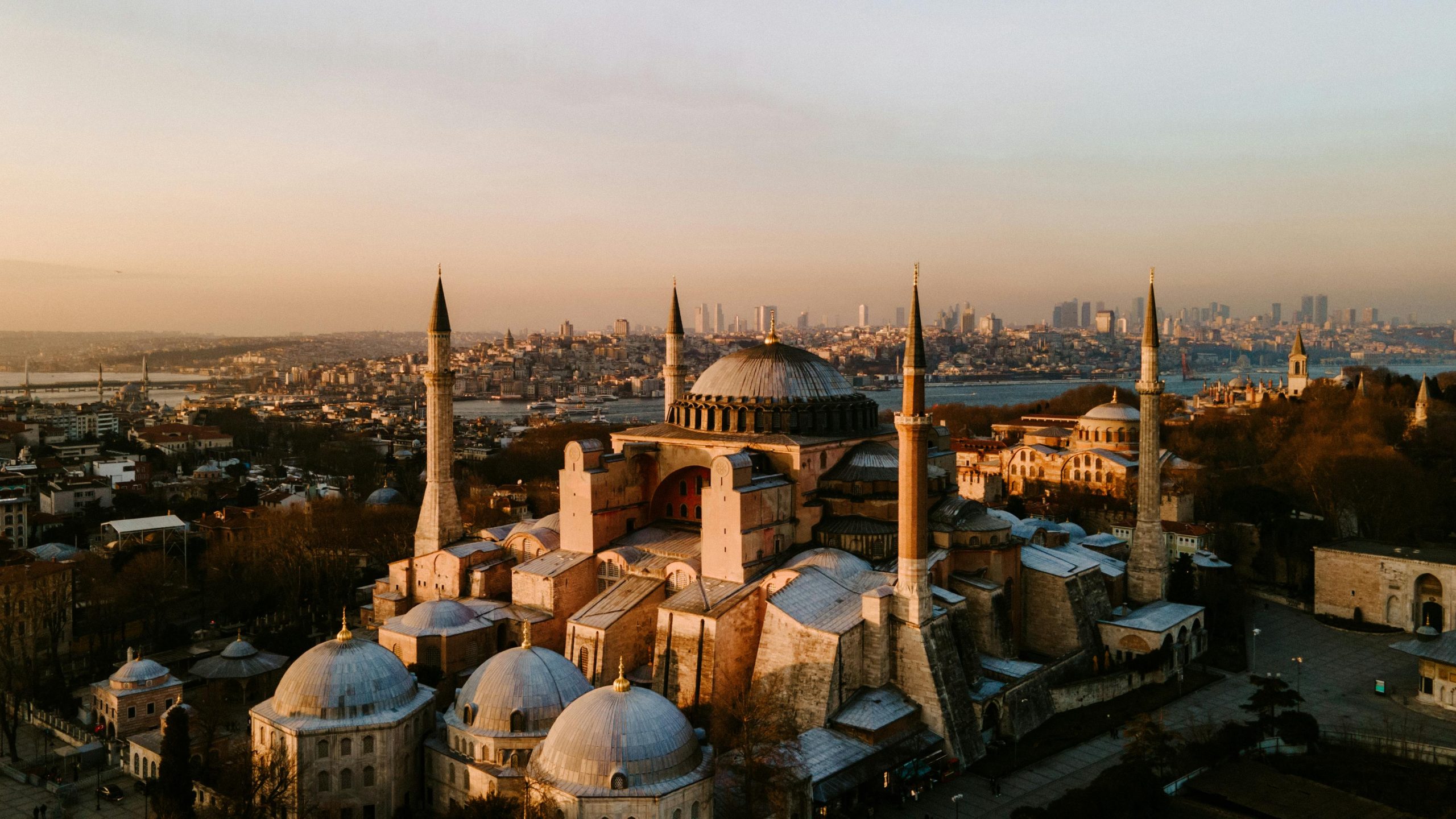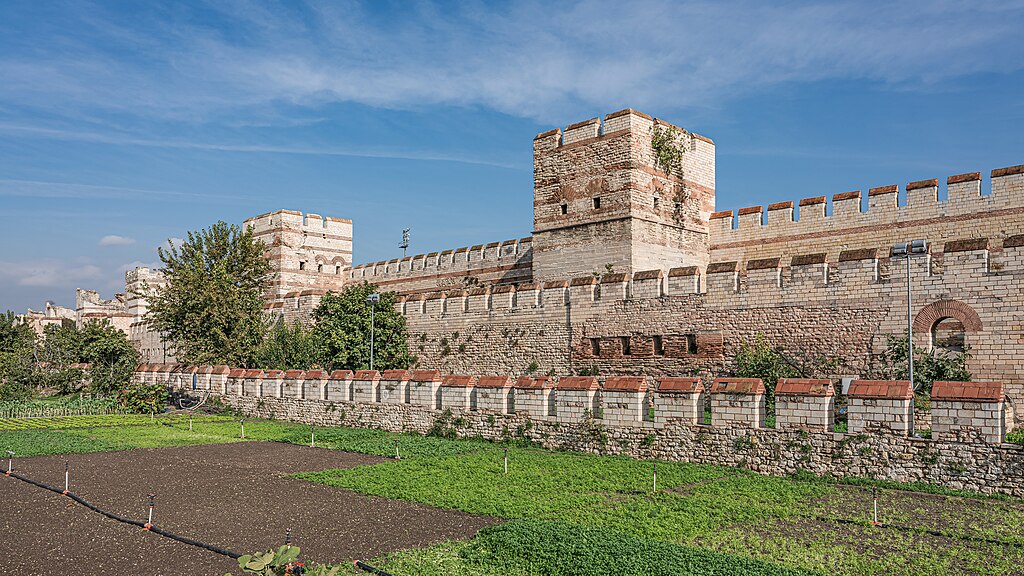Istanbul Archaeological Museum, Istanbul
Museum in Istanbul

Just a short stroll from Topkapi Palace and Gülhane Park lies one of the must-see places in Istanbul — the Istanbul Archaeological Museum, a treasure trove of more than one million artifacts tracing the story of human civilization. From Egyptian sarcophagi and Babylonian tablets to Hellenistic sculptures and Ottoman tiles, this is not just a museum but a time machine, offering an immersive journey across empires and epochs. If you're a lover of history, art, or ancient cultures, this spot is one of the best places to see in Istanbul, and it's also a highlight of any walking tour of Istanbul's Old Town.
Spread across three historic buildings, the museum complex takes visitors on an extraordinary cultural journey — from the earliest cities of Mesopotamia to the grandeur of classical Greece and Rome, all the way to the artistic refinement of the Islamic world. It's the kind of place that rewards curiosity, with quiet courtyards, intricate mosaics, and marble corridors echoing with the stories of long-lost civilizations.
Table of Contents
- History and Significance of the Istanbul Archaeological Museum
- Things to See and Do in the Istanbul Archaeological Museum
- How to Get There
- Practical Tips on Visiting the Istanbul Archaeological Museum
- Is the Istanbul Archaeological Museum worth visiting?
- FAQs for Visiting the Istanbul Archaeological Museum
- Nearby Attractions to the Istanbul Archaeological Museum
History and Significance of the Istanbul Archaeological Museum
The Istanbul Archaeological Museum was founded in 1891 under the visionary guidance of Osman Hamdi Bey — an Ottoman artist, archaeologist, and museum director who played a key role in modernizing cultural preservation within the empire. Its creation reflected the late 19th-century Ottoman ambition to gather and protect antiquities from across its vast territories. What began as a modest collection has grown into one of the ten richest archaeological museums in the world.
The museum's holdings encompass relics from every corner of the former Ottoman realm — stretching from the Balkans to North Africa, from Anatolia to Mesopotamia, and as far east as Afghanistan. Over the years, it has become not just a place of national pride but a vital academic and cultural institution, preserving the shared heritage of many civilizations that shaped the Mediterranean and Middle East. Its establishment also represented a cultural shift — an acknowledgment that history should be studied, preserved, and celebrated by future generations.
Things to See and Do in the Istanbul Archaeological Museum
The museum complex is divided into three main sections, each offering a different perspective on ancient life. The Museum of Archaeology, the largest of the three, showcases collections from the Archaic, Classical, Hellenistic, and Roman periods. Highlights include the Alexander Sarcophagus, famed for its remarkably detailed carvings of ancient battles, and the Sarcophagus of the Crying Women, a masterpiece of Hellenistic art. Other galleries explore the evolution of Istanbul itself, as well as artifacts from Troy, Anatolia, and neighboring regions such as Cyprus and Syria-Palestine.
The Museum of the Ancient Orient focuses on earlier civilizations — Sumerian, Assyrian, Babylonian, and Hittite cultures — displaying cuneiform tablets, stone reliefs, and artifacts excavated from Mesopotamia and Anatolia. These objects reveal the sophistication of ancient urban societies that thrived thousands of years before the classical era. The Tiled Kiosk Museum, the third section of the complex, houses some of the finest examples of Turkish and Islamic tilework, including vibrant Iznik ceramics and decorative panels from Ottoman architecture. Together, the three buildings create a stunning narrative of artistic and cultural continuity.
How to Get There
The Istanbul Archaeological Museum is located within the grounds of Gülhane Park, near the entrance to Topkapi Palace in the Sultanahmet district. It's easily accessible via the T1 tram, stopping at Gülhane or Sultanahmet stations, both just a short walk away. Visitors arriving by train can use Sirkeci railway station, located about 10 minutes from the museum on foot. You can use the official TCDD Taşımacılık website to check schedules, compare routes, and purchase tickets for Turkey's national and regional trains operated by TCDD. For a more streamlined experience (especially if you prefer an English interface or want to compare across countries), we recommend using Omio, which allows you to easily compare prices, schedules, and book train tickets across Turkey and the rest of Europe — all in one place. For those driving, parking options are available near Gülhane Park and the Topkapi Palace area, though spaces can be limited during peak hours. If you are looking to rent a car in Turkey I recommend having a look at Discover Cars, first, as they compare prices and review multiple car rental agencies for you.
Practical Tips on Visiting the Istanbul Archaeological Museum
- Best time to visit the Istanbul Archaeological Museum: Morning hours to enjoy quieter galleries before tour groups arrive.
- Entrance fee in Euros: Approximately €0.30 (10 TL).
- Opening hours: Daily 9:00 AM–5:00 PM (until 7:00 PM from April to October); last ticket sold 30 minutes before closing.
- Official website: https://muze.gov.tr
- How long to spend: 1.5 to 2 hours for a full visit.
- Accessibility: Wheelchair accessible, though some older areas have steps.
- Facilities: Restrooms, museum shop, and café on site.
- Photography tip: Look for natural light streaming into the marble halls — ideal for photographing statues and sarcophagi.
- Guided tours: Offered in English and Turkish, or explore at your own pace with an audio guide.
- Nearby food options: Several restaurants and tea gardens in and around Gülhane Park and Sultanahmet.
Is the Istanbul Archaeological Museum worth visiting?
Absolutely. As one of the top attractions in Istanbul, the Istanbul Archaeological Museum offers an unparalleled opportunity to see the artistic and cultural achievements of countless civilizations under one roof. It's not just a museum — it's a global heritage archive that connects ancient history with the present, making it a must for anyone seeking to understand Istanbul's place at the crossroads of the world.
FAQs for Visiting the Istanbul Archaeological Museum
How many buildings make up the museum?
Three — the Museum of Archaeology, the Museum of the Ancient Orient, and the Tiled Kiosk Museum.
What are the most famous artifacts?
The Alexander Sarcophagus, the Sarcophagus of the Crying Women, and Babylonian reliefs from the Ishtar Gate.
Is the museum child-friendly?
Yes, though older children and teens interested in history may appreciate it most.
Can you visit on the same day as Topkapi Palace?
Yes, the two sites are next to each other and can easily be combined into one itinerary.
Are the exhibits labeled in English?
Yes, most displays include English translations alongside Turkish text.
Nearby Attractions to the Istanbul Archaeological Museum
- Topkapi Palace – The grand residence of Ottoman sultans, located next to the museum.
- Gülhane Park – A peaceful green escape once part of the palace gardens.
- Hagia Sophia – The city's most iconic landmark, blending Byzantine and Ottoman heritage.
- Basilica Cistern – An atmospheric underground chamber supported by marble columns.
- Sultan Ahmet Park – A lively public square between the Blue Mosque and Hagia Sophia.
The Istanbul Archaeological Museum appears in our Complete Guide to Visiting Istanbul!
This website uses affiliate links which may earn a commission at no additional cost to you!
Visiting Istanbul Archaeological Museum
Daily 9:00 AM–5:00 PM (until 7:00 PM from April to October); last ticket sold 30 minutes before closing.
Approximately €0.30 (10 TL).
Nearby Attractions
- Topkapi Palace (0.2) km
Palace in Istanbul - Hagia Irene (0.2) km
Church and Museum in Istanbul - Sogukcesme Street (0.3) km
Street in no_link - Hagia Sophia (0.4) km
Cathedral and Mosque in Istanbul - Basilica Cistern (0.5) km
Historic Building in Istanbul - Stone of Milion (0.5) km
Historic Site in Istanbul - Hurrem Sultan Hamam (0.5) km
Baths and Historic Building in Istanbul - Sultan Ahmet Park (0.6) km
Park in Istanbul - German Fountain (0.6) km
Fountain in Istanbul - Arasta Bazaar (0.8) km
Bazaar in Istanbul


